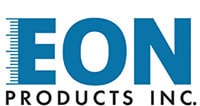Common Contaminants Measured in Passive Groundwater Samples
Passive groundwater sampling is growing in popularity due to its many advantages over traditional methods like pump-and-purge or low-flow sampling. Despite the industry acceptance of passive sampling, there are still questions from those newer to the technology regarding which common contaminants measured in passive groundwater samples this method can be used to monitor.
This blog post delves into the contaminants that passive groundwater sampling methods are particularly adept at collecting and analyzing, offering insights for project managers and field technicians in environmental consultancies.
Understanding Passive Groundwater Sampling
Passive groundwater sampling, unlike its more labor-intensive counterparts, involves collecting aquifer-representative water samples without the need for purging. This method minimizes disturbance to the water column and avoids the non-representative stagnant water that exists above the well screen in monitoring wells. For this reason, passive sampling does not require purging to refresh the monitoring well, since the water sampled is undisturbed and representative of the surrounding aquifer.
Depending on the type of passive sampler used, passive samplers can measure for any compound found in groundwater. Here are some of the more common ones.
Key Contaminants Detected by Passive Sampling
Volatile Organic Compounds (VOCs)
Passive sampling is exceptionally effective for detecting VOCs. These are often found in industrial waste and can be harmful even at low concentrations. Studies have shown that passive samplers can detect VOCs more consistently compared to traditional methods, which sometimes fail to capture these due to their volatility and exposure to air during the purging process.
Using a passive diffusion bag (PDB) like EON’s Equilibrator™ or a passive grab sampler like the HydraSleeve™ is tremendously effective for capturing representative samples for VOC analysis. Because both the PDB and the HydraSleeve™ do not require purging and do not expose the sample to the air, the VOCs do not escape from the sample through evaporation like they may with a pumped or bailed sample.
Metals
Metals like lead, mercury, and arsenic, commonly found in industrial effluents, are easily measurable through passive sampling. This method ensures that the delicate balance of the water chemistry is not disrupted, which is crucial for accurate metal detection.
EON’s HydraSleeve™ and Dual Membrane PDB™ are best suited for sampling when testing for metals.
Nutrients
Nitrate and phosphate levels are vital indicators of agricultural runoff and sewage leakage. Passive samplers, by maintaining the integrity of the water sample, provide accurate readings of these nutrients.
Emerging Contaminants
Compounds like pharmaceuticals and personal care products are increasingly found in groundwater. Passive sampling, with its ability to detect low concentrations without altering the sample, is ideal for monitoring these emerging contaminants.
With regulations around PFAS, one of the most discussed emerging contaminants, constantly evolving, it is important to ensure your sampling method can accurately capture the levels of these “forever chemicals”. Passive sampling for PFAS is extremely effective due to less disturbance of the water column, and less contact with components that potentially bias the sample, such as Teflon components in pumps.
EON produces HDPE versions of both the HydraSleeve™ and the Dual Membrane PDB™ that can be used to accurately measure for PFAS.
Conclusion
Passive groundwater sampling’s ability to accurately capture a wide range of contaminants for analysis, coupled with its cost and time efficiency, makes it an invaluable tool for environmental consultancies. By integrating passive sampling into your groundwater monitoring strategies, you can ensure more precise, reliable, and comprehensive data analysis.
Check our The Ultimate Guide to Passive Groundwater Sampling for more information.
